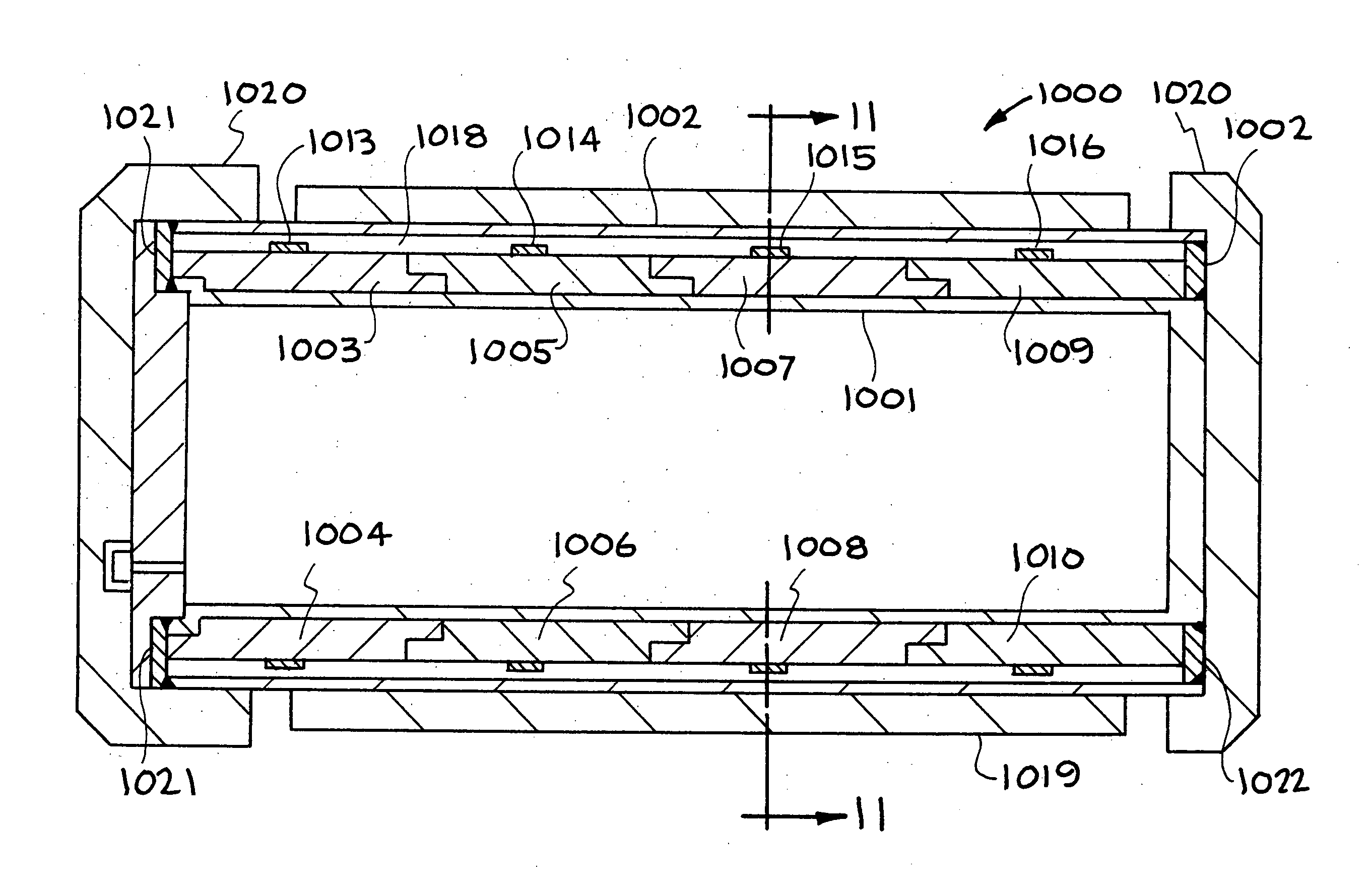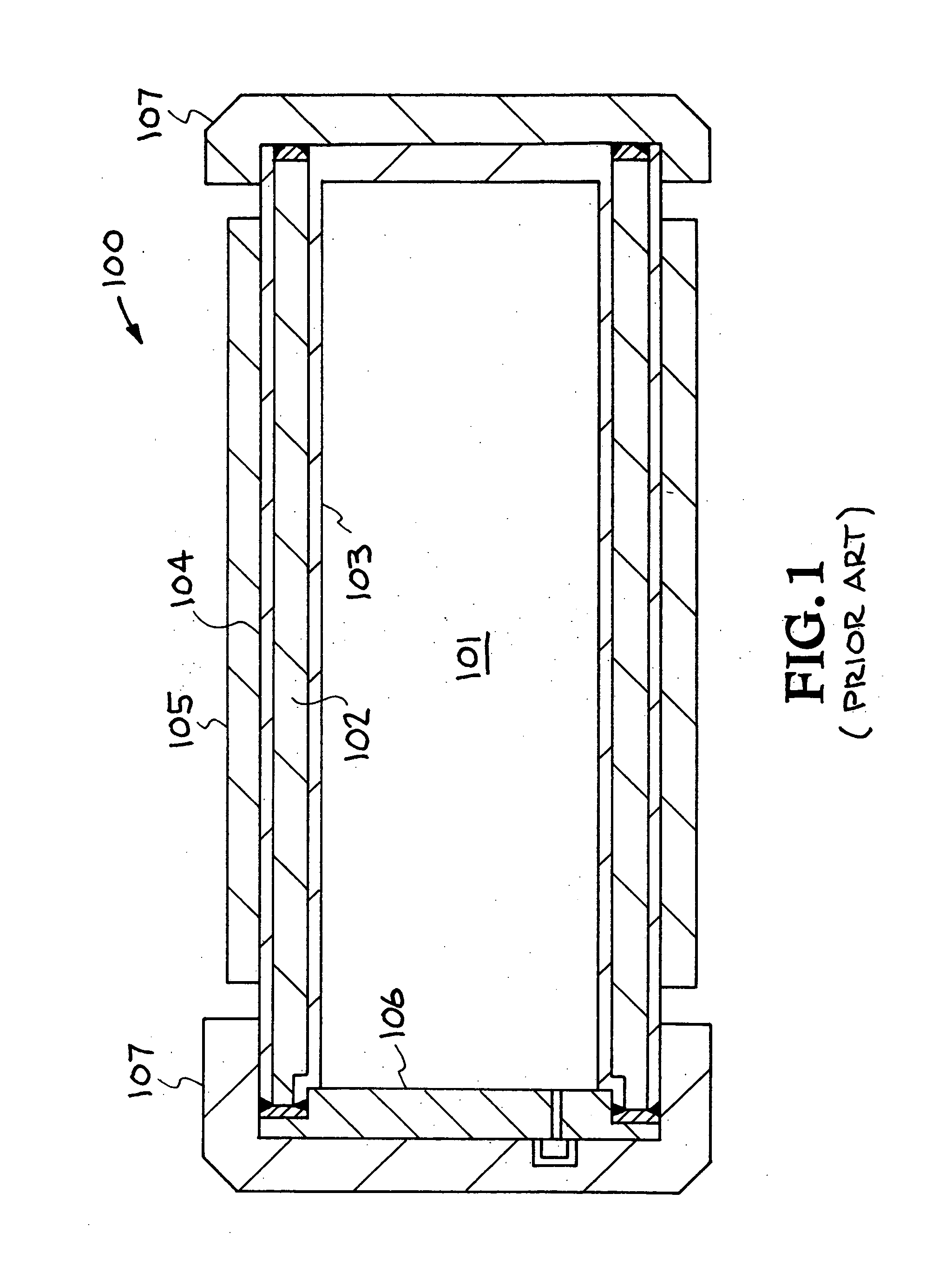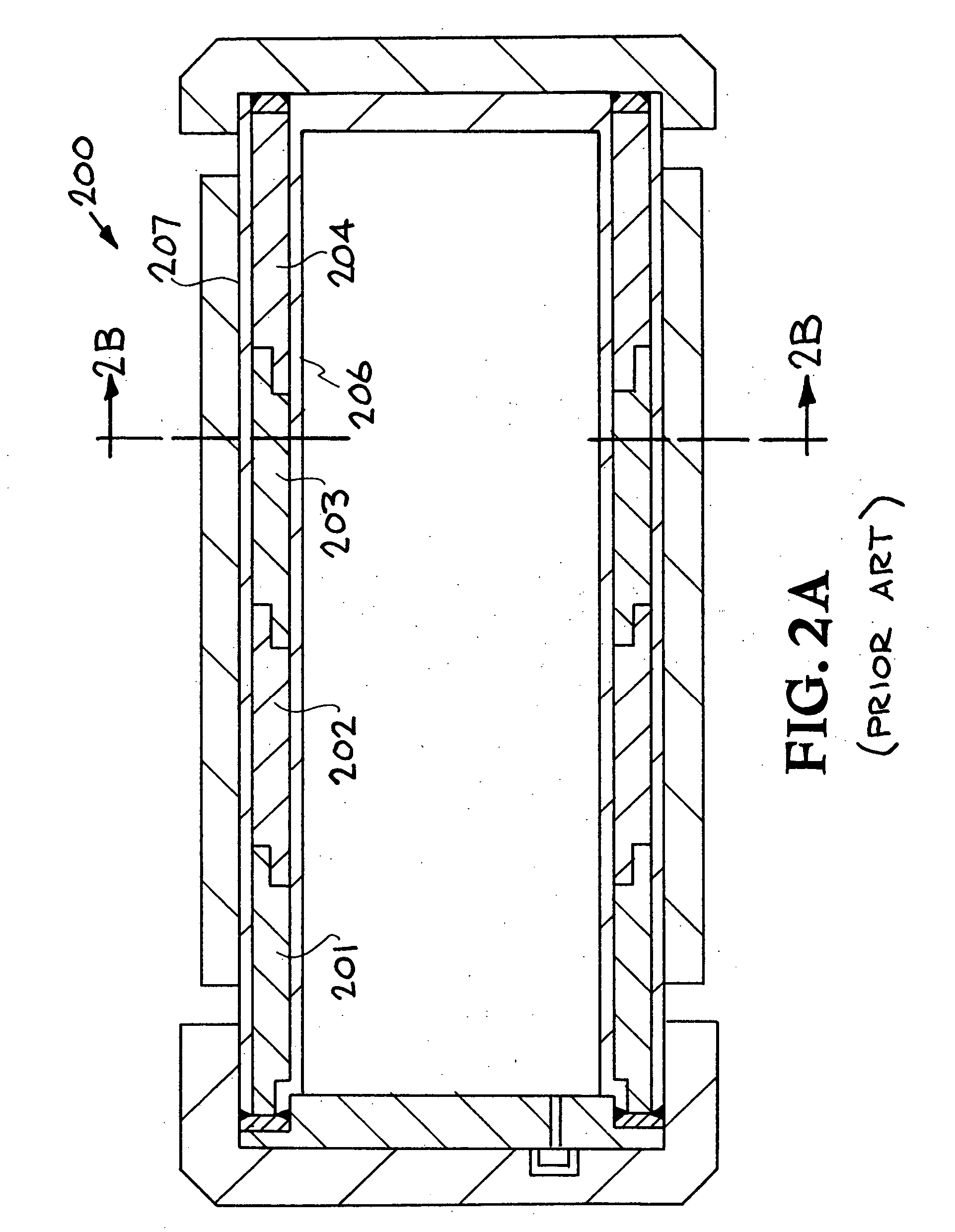Composite-wall radiation-shielded cask and method of assembly
a radiation shielding and composite wall technology, applied in nuclear engineering, nuclear elements, nuclear engineering problems, etc., can solve the problems of complex and difficult current fabrication techniques used to make casks using radiation shielding materials, difficult to get good contact between radiation shielding materials, and complicated process
- Summary
- Abstract
- Description
- Claims
- Application Information
AI Technical Summary
Problems solved by technology
Method used
Image
Examples
Embodiment Construction
[0024] The present invention is directed to an improved composite-wall radiation-shielded cask and a method of assembling / constructing the same. Generally, the assembly process involves first assembling a bound inner assembly of the cask, such as shown in FIGS. 3-7. The bound inner assembly is formed using two or more non-annular sections of a radiation-shielding material which are secured to the outer surface of an inner containment shell using a strong banding material (i.e. strap) or fasteners. Subsequently, the bound inner assembly is inserted into an outer shell, shown in FIG. 8 to form a clearance gap between the inner assembly and the outer shell. The clearance gap is maintained, for example, by welding (not shown) the outer shell to the inner containment shell at a lower end. As shown in FIG. 9, the clearance gap is then filled through the open end (e.g. top end in FIG. 9) with a suitable filler material, such as a pourable hardening material, capable of transferring mechani...
PUM
 Login to View More
Login to View More Abstract
Description
Claims
Application Information
 Login to View More
Login to View More - R&D
- Intellectual Property
- Life Sciences
- Materials
- Tech Scout
- Unparalleled Data Quality
- Higher Quality Content
- 60% Fewer Hallucinations
Browse by: Latest US Patents, China's latest patents, Technical Efficacy Thesaurus, Application Domain, Technology Topic, Popular Technical Reports.
© 2025 PatSnap. All rights reserved.Legal|Privacy policy|Modern Slavery Act Transparency Statement|Sitemap|About US| Contact US: help@patsnap.com



